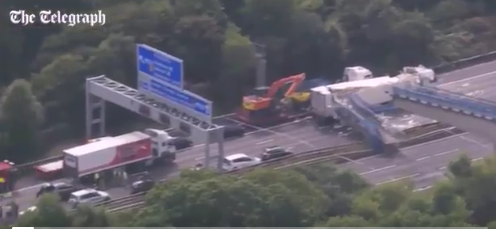Submitted by L. Millard on Fri, 29/09/2017 - 11:27
A tall truck hits a bridge every four and a half hours in the UK causing traffic chaos and thousands of pounds in bridge inspection, repair and maintenance costs.

Credit: A still from the University of Cambridge YouTube video presenting the autonomous vision-based over height vehicle detection system
CSIC Co-Investigator, Ioannis Brilakis, Reader at the Laing O’Rourke Centre for Construction Information Technology (CIT) Laboratory at the University of Cambridge, is working on a collaborative project with London Underground that uses computer vision technology to help prevent bridge strikes. “These collisions lead to traffic delays, congestion and, in extreme cases, can derail trains and cause bridges to collapse. We are working to create, test and deploy an affordable system that can actively warn over-height vehicles and detect and report bridge strikes.”
Bridge strikes are a major issue occurring throughout transportation networks worldwide. In the UK, there are more than 10,000 railway bridges crossing over roadways. Of these, 3,400 are considered ‘at risk’, due to low clearance height. With the average cost per bridge strike ranging from £5,000 to £25,000, bridge owners require an affordable and reliable warning system that is suitable for widespread implementation without compromising accuracy and performance.
Bella Nguyen, a CIT PhD student, is investigating methods to detect and prevent bridge strikes: “Using computer vision we are now able to detect over-height vehicles and capture number plates from the same camera feed. We mount the camera at the clearance height to detect vehicles that exceed it and remove false detections caused by environmental factors. This allows us to provide a personalised warning for drivers which enables them to take the nearest exit and avoid hitting the bridge.”
The system also reports offending vehicles to the relevant bridge authority if a collision occurs. Bridge owners can now use this technology to reduce the number of strikes and charge the offenders when damage is caused.
To find out more about autonomous vision-based over height vehicle detection watch the University of Cambridge YouTube video here.
Read ‘Optimized Parameters for Over-Height Vehicle Detection under Variable Weather Conditions, May 2017, by Bella Nguyen, Ioannis Brilakis and Patricio A. Vela, here.
Acknowledgements: Professor Campbell Middleton and Paul Fidler for their help and involvement in the deployment of this system.
